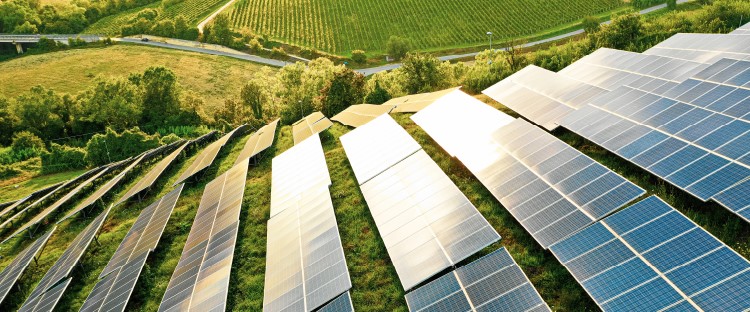Embracing the BRI ecosystem in 2018: Navigating pitfalls and seizing opportunities
By Deloitte
China-proposed Belt and Road Initiative (BRI), which has been a large part of the investment landscape across a swathe of the world for four years, will become increasingly important. This paper summarises Deloitte’s key BRI insights for 2018, and also explains how industry players can best position themselves to seize the ever-widening range of BRI investment opportunities...
Winners and global resonance
BRI 2.0
In May 2017 at the BRI Forum in Beijing, President Xi told attendees that the vision underpinning BRI “is becoming a reality and bearing rich fruit,” adding that “a solid first step has been taken.”
Naturally some regions and industries have done better than others. Southeast Asia and South Asia remain key beneficiaries and, our research shows, remain the most favored by SOEs (figure 9). For the former, that is partly due to proximity to China and a higher state of development, and partly due to the demand for better infrastructure. For the latter, the size of their populations and vast market potential are important draw cards.
Europe is also popular, as are Russia and Central Asia. We expect that will remain the case over the coming years, although given that BRI’s sustainability is aligned with China’s economic and political interests, it is likely that the initiative’s priority will continue to be areas that are geographically close to China.
We saw earlier why infrastructure attracted more funding than other sectors, with China’s SOEs the key winners. As BRI’s global ecosystem builds, it will encompass investments in manufacturing and trade, as well as softer investments in tourism and culture. That will create opportunities for MNCs with the technology, skills and connections that Chinese firms, whether SOEs or POEs, often lack.
In addition, we expect increasing numbers of Chinese POEs, many of which view BRI as a venue for SOEs, will become more active in areas such as M&A, which is what Beijing wants. Although some POEs are cautious, others have committed.
Bigger pool of opportunity
This goes to the heart of BRI’s phase 2, which is widening the pool of opportunity. And although many MNCs have yet to reap benefits, some have. Take ABB, for example. The Swiss-based firm has been involved in dozens of EPC deals undertaken by Chinese companies, for which it aims to become “the partner of choice.” In 2016 alone, it helped 400 Chinese firms to resolve inter-country differences in design and industrial standards.
Caterpillar says it regards BRI as a long-term opportunity. For its part, GE recorded orders worth $2.3 billion in 2016, most under BRI projects, up from just $400 million in 2014; over the next year or so, GE will bid for business worth another $7 billion of business. Honeywell and Siemens have also benefited from their technological offerings, while Citibank and Zurich are among others getting more deeply involved.
We believe phase 2 will bring greater global resonance, and that MNCs that position themselves strategically now stand a good chance of benefiting.
Phase 2 is being driven by the ready funding provided by China―and increasingly by others. In May 2017, President Xi announced a further $124 billion for BRI, including $14.5 billion for the Silk Road Fund, and special lending schemes for the China Development Bank and the Export-Import Bank of China, worth around $36 billion and $19 billion, respectively. He also called on financial bodies to establish a BRI fund worth $43 billion.
The involvement of the Asian Infrastructure Investment Bank (AIIB)―which is expanding its influence and in June welcomed its 80th member―in BRI projects will prove increasingly important. As it builds credibility and experience, and enjoys the backing of China and dozens of other governments, it should have little trouble raising funds on global capital markets. This internationalisation of the AIIB should also increase the sensitivity of sponsoring governments, not least China, to perceptions of political influence in BRI.
In short, BRI is benefiting from initiatives that have increased the amount of financing, its sourcing (including from developed nations such as the United Kingdom and Germany) as well as the cofunding of projects between, say, the AIIB and other multilateral organisations.
MNC Opportunities
Not only has MNCs’ opportunity to get involved in BRI never been better, it is likely to keep improving. Why? Not least because Beijing wants to boost BRI’s inclusiveness. China’s leaders describe BRI as an initiative, not a strategy. While that might seem a low-value distinction, it informs an important difference: It means Beijing views BRI as a global program that was initiated by China, and not as a Chinese project.
China stands by its assertion that BRI is for all, and needs to show it means that by keeping BRI open. That will not hold up if MNCs can participate in only a showcase fashion.
Phase 2’s very nature will also afford MNCs greater opportunity, because many enjoy competitive advantages over Chinese firms in areas such as manufacturing, trading and tourism.
There are other pointers too. Firstly, more funding will come from outside China, including from monetary financial institutions (MFIs) such as the World Bank and the ADB; this will bring with it increased transparency as well as rules with which MNCs are more familiar.
Secondly, the AIIB recently brought its decision making more in line with that of the World Bank and the ADB, and said it would take account of issues such as the environment; this should have a similar effect given that MNCs have more experience in meeting such requirements.
And thirdly, richer countries are benefiting from BRI, and are better able to ensure that projects are of the highest standard, and that the companies carrying out such work are the best available. Again, that ought to benefit non-Chinese MNCs...
Conclusion: Three key insights and predictions
Our experience with BRI projects over the years has allowed us to develop three key insights and predictions, all of which have appeared in this report in some form.
Firstly, BRI is much more than a Chinese-funded infrastructure project. And although SOEs have undertaken the bulk of BRI projects to date, we expect many more POEs and MNCs will become involved in the near future. Linked to this, many projects are underpinned by strong bilateral relationships between China and the countries concerned, which makes these investments more secure than outsiders might imagine. And while most participants are developing countries, it is also true that developed nations are increasingly involved.
Secondly, BRI’s opportunities will become increasingly plentiful, but a longer timeframe is needed when measuring returns―10–15 years rather than 3–5. And although many projects involve higher risks than conventional investments, it is important to keep those risks in perspective and deal with them dynamically.
Thirdly, BRI is a collaborative ecosystem that to date has focused on energy and infrastructure, but that over the next five years and beyond will evolve to concentrate on trade, manufacturing, the Internet, tourism and other aspects.
It is worth saying, too, that Beijing’s view of BRI is not well understood abroad: It sees this initiative as comprising a different interpretation of globalisation, one that is about optimising returns, not about maximising them in solely financial or commercial terms. This is encapsulated in the principle underpinning BRI: 共商共建共享, which translates as, “Trade together, build together, enjoy together.”
And so, while BRI is in part an initiative designed to push China’s economy to the next stage, to Beijing it is more too: a way to create a more equitable global economic system. MNCs that manage to position themselves well should find BRI a striking, multiyear opportunity.
Please click to read full report.




